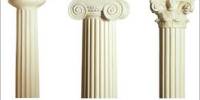Chattel house is a movable wooden dwelling, usually set on a foundation of loose stones on rented land. It is a Barbadian term for a small moveable wooden house that working-class people would occupy. They were modest wooden buildings set on blocks so that they could be easily moved from one lease holding to another. The houses were constructed to be transportable in the event of landlord and tenant disputes. The term goes back to the plantation days when the homeowners would buy houses designed to move from one property to another. The name chattel referred to the fact that they were movable property.

Chattel is the movable personal property that can be either animate or inanimate property such as hogs, furniture, and automobiles. Chattel houses are set on blocks or a groundsill rather than being anchored into the ground. In addition, they are built entirely out of wood and assembled without nails. Chattel houses are set on blocks or a groundsill rather than being anchored into the ground. This allowed them to be disassembled and moved from place to place. This system was necessary historically because home “owners” typically did not own the land that their house was set on. Instead, their employer often owned the land. In early settlement days, home owners were not necessarily landowners, but part of a tenantry system of the plantations. In case of a landlord tenant dispute, the house could be quickly moved to a new property. Chattel property and other personal property is tracked separately from land or improvements made to land because it can be depreciated more quickly.
It has been customary for people in Barbados to build additions onto their chattel houses. The steep gable roof, constructed of corrugated iron, were adapted to suit the climate of heavy rains and winds. As such, the house may look as though different sections are at slightly different heights or in a different pattern due to each part being constructed at different stages. The angle of the roof deflects the wind rather than providing a platform for it to lift off.
Modern chattel houses tend to have a greater degree of permanence, as they are often connected to the electricity mains, and may either have a permanent septic tank or be connected to a public sewer system. The fretwork around the windows and openings were placed there to provide shade and to act as a filter against the rain. Today, chattel houses are slowly diminishing in number since tastes and building styles have changed, but their use is now being adapted to commercial enterprises.
Information Source:
















